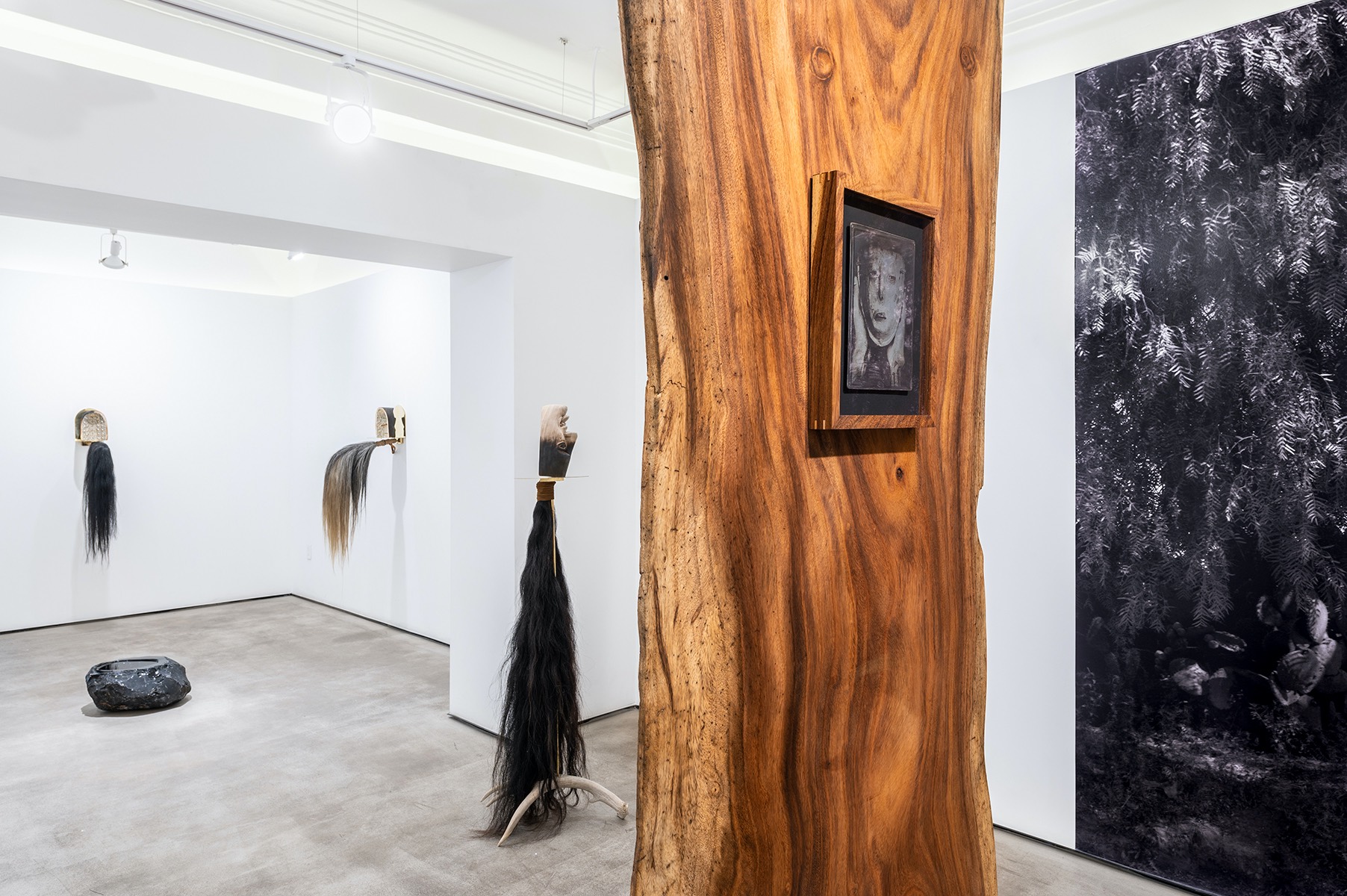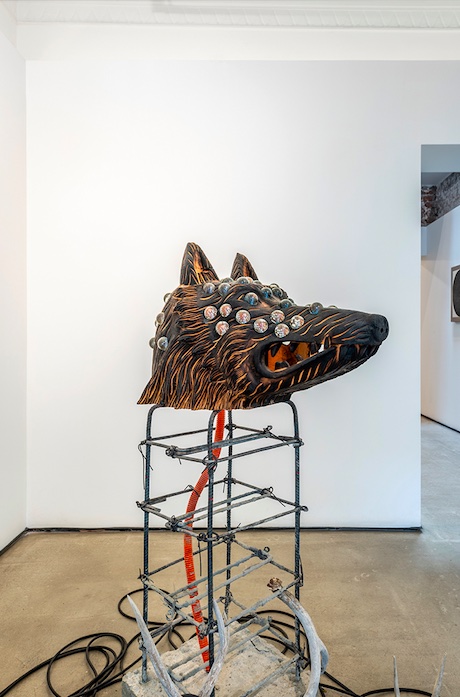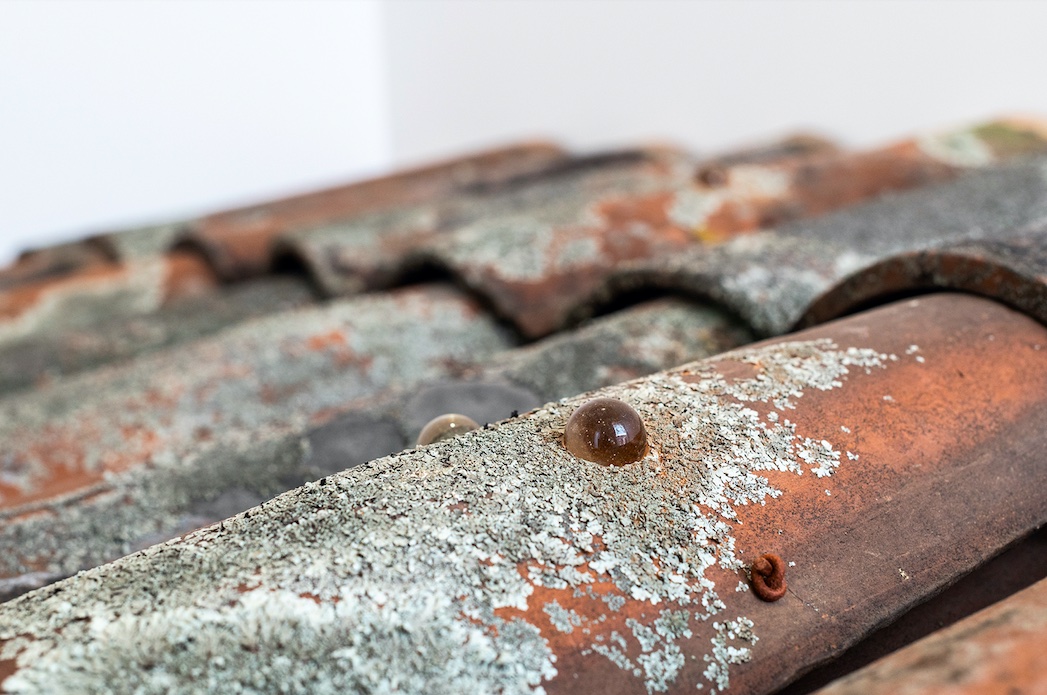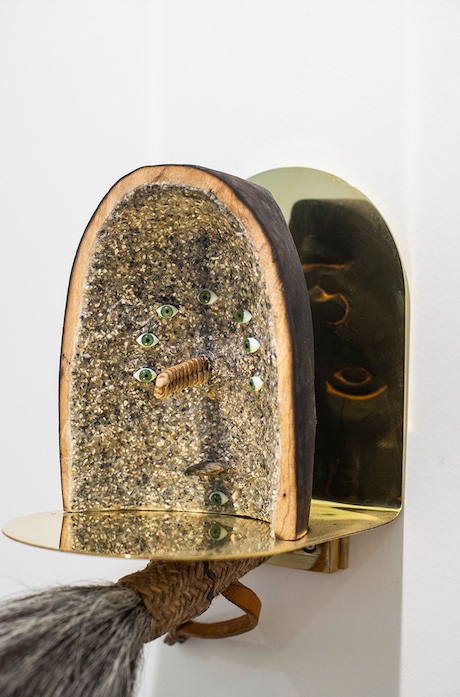
Essay
'En el En Medio, under the peppertrees': Jorge Rosano Gamboa at la Nao
by Bruno Enciso
Reading time
5 min
Jorge Rosano Gamboa presents his first solo exhibition at la Nao, thus closing his stay within the gallery’s study program. For this project, he had the curatorial support of Paola J. Jasso and collaborated with various master craftspeople based in different parts of the country. The body of work present in the exhibition includes paintings, sculptural objects, a sound installation, a photographic print, and a daguerrotype. This variety of formal languages brings a certain dispersion: it’s not clear how they’re involved with one another. If anything, these works share a quite specific facture—the feeling that they’ve been produced with care. They are durable, solid materials, and several of them are very enigmatic. They have been worked upon while looking for something beyond the modeling of their shape; it seems that there’s complete confidence that they possess extra-physical qualities.

Still unable to identify a narrative line, some easily recognizable elements—such as roofs tiles and peppertrees—begin to paint a flat, rural landscape: traces of a village that I think I’ve visited before. No one here yearns for the city; thinking of it would be more like a delusion. The wind is heard passing through the trees and mixes with the panting of a dog. But, where is everyone? The dog has at least twenty eyes, all full of fire. It looks at my face, my back, and the palms of my hands at the same time. I think he can see something inside of me. My movements don’t make it feel threatened because it’s seen them all coming. “Is there something you want to show me?” I ask it. It leads me to the foot of a clock I can’t read. Do I need to wear one of these masks? With it, perhaps I can see these ghosts that feel so close, or rather end up becoming one.

Taking advantage of the forces contained in these quasi-magical objects, the artist configures peculiar appearance conditions so that characters who are always absent can manifest their presence, without having to show their faces. An argument persists: the latency of a memory is not owing solely to its potential for producing an image. Rosano Gamboa’s brief biography, provided by the gallery, mentions that his work stems from a photographic thought. Indeed, here exists an inquiry into the possibility of revealing or making appear, although the optical record has expanded. In this exhibition, the son who’s determined to honor his father’s memory has worked just as hard as the artist who wants to reconsider the possibilities of photography.

On the other hand, I find in the exhibition a reading guideline that can be very substantial. En el En medio (“In the In between”). The capital E of the second En seems to indicate a noun that behaves as a proper name. To see it more clearly, we could add a hyphen that works as a ligature: En el En-medio (“In the In-between”). If the autonomy of this bipartite noun is not in view, the title could only be interpreted as indicating a point located between two things. With a suspicious naturalness, the detached En medio (“In between”) directs us to a question: In between what? What are these two things at whose limit we are located? Or what is it that’s been split in half? On the other hand, if we hold that invisible link, the questions can change direction. What is the In-between? Where is it? How much does it cover? Without having to name the extremes that make it possible, the In-between exists. Its dimensions, as well as the forces operating within it, remain undetermined.

Regardless of the personal work with which the artist approaches his own memories, here is postulated a particular way of understanding that place inhabited by the absent. A type of thought in which death is other things besides the sharp end of life. The presences vibrate without facing the Christian crossroads of heaven (which is above), as opposed to hell (which is below). The In-between rather goes from side to side; its horizons move and multiply. The In-between is walked by a dog that sees in all directions, that guides those who ask it, and yet never stops wandering. In order to account for this space—still unable to grasp it—Rosano Gamboa makes use of several visual games where positive and negative tense each other until they produce something more than their contradiction. Perhaps the most helpful is in the daguerrotype: How can putting on a mask be the same as looking in the mirror?
There’s much of value in the work of artists who insist on aesthetic relationships between subjects and objects as paths towards reflections or experiences of a more spiritual nature, which do not fit into modern hyper-consciousness. Nevertheless, I remain attentive to the effects of solemnity, to what happens to the body when it enters a temple. After all, in the temples the images ask you to respect them and to allow them to be true, and one can’t always correspond to them. In the meantime, I celebrate the fact that in this exhibition mourning is a labyrinth of mirrors, a landscape, something more than an ailment.
Translated to English by Byron Davies
Published on April 15 2023